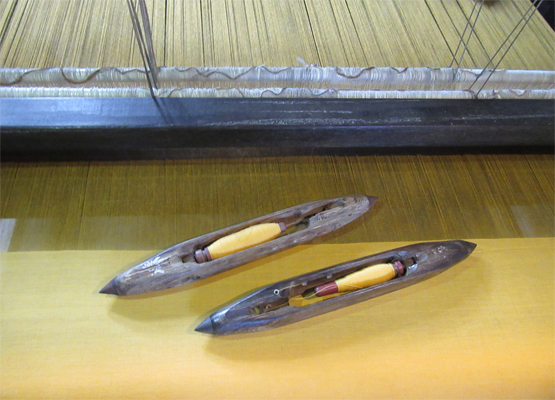
Manipur is popular for its unique fabrics like the lasingphee, leirum, pahenk and moiraingphee. Cotton-weaving is steeped in religious connotation and romanticism. Each technique employed by the weavers and each design or pattern is inspired by a legend or is symbolic of their special ceremonies, functions or dances and other Manipuri arts. Weaving is practised universally amongst the tribal clans wherein every young girl, married or unmarried knows the process. The backstrap loom is also given as part of the new bride’s dowry. While the women weave for personal use, to make traditional garments and fabrics to clothe their families, the men partake in weaving done for commercial purposes.
The Ningthouphee and Akoibi patterns are woven into the Phaneks. These designs are inspired by snake motifs and such patterns are usually worn by royalty. Tradition claims that a gunshot be fired as a salutation of honour when the weaver begins weaving the royal pattern of the Ningthouphee. Phaneks are lungis worn by the Manipuri women. The Morangphee is the traditional Manipuri saree that sports a temple border. The Angami Naga or Sami Mami Phee is a black shawl with thickly embroidered animal motifs and is presented to brave and distinguished fighters by royalty to honour their fighting skills and prowess. The Lasingphee is a quilted design to keep warm during winters. It is made from cotton as Manipur does not produce wool. Bottle designs that resemble a loom accessory are called Likli and are another popular pattern. Manipur claims to be the original home of the Mulberry silkworm, after which it is said to have migrated to China. But most of the silk woven is Manipur is the Eri silk. The Tussar silk is also being woven during recent times.
The Shamilami pattern is an expert combination of embroidery and weaving and wearing such a pattern signifies high social status and wealth. A pattern resembling grains of wood chopped clean is called the Maibung. The Hijamayak pattern, which takes the shape of a boat, is worn during death ceremonies and funeral processes. The patterns used are typical of the region in which they are woven and take inspiration from their surroundings. Swords, spears and horses used in rituals are used as motifs to form borders for sarees and other garments. The classic Moirangphee Chaddar features a triangular motif along its borders. The traditional Moirangphee sarees are woven in white or pastel colours and feature the temple top or mandir shikara motif on their border with dotted patterns on the body of the saree. It is said that the Goddess Moirangphee herself created this pattern.

